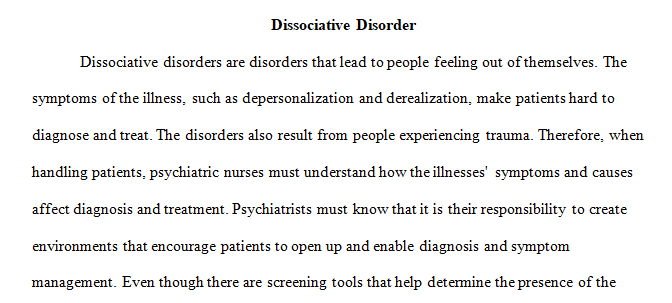Identify two self-report measures or screening tools with evidence-based practice. Explain the challenges of using them
Identify two self-report measures or screening tools with evidence-based practice. Explain the challenges of using them
- There are self-report measures for patients and screening tools to complete when gathering information for your diagnosis of dissociative disorders. Identify two self-report measures or screening tools with evidence-based practice. Explain the challenges of using them.
- The process of diagnosing dissociative disorders can be complicated by a patient’s early trauma and attachment difficulties that result in mistrust of others, specifically authority figures. As a PMHNP, you could be viewed as an authority figure. How will you address this barrier with your patient? What other barriers do traumatized patients have that makes diagnosing dissociative disorders challenging?
- Treatment for dissociative disorders is complex and addresses intrapsychic conflicts, defenses, trauma-related cognitive distortions, compensations, and distorted or deficient memories that lead to altering personality structures. Explain how your relational aspect and therapeutic alliance will be one of several predictors for therapeutic interventions. How will you manage co-occurring and distressing symptoms with pharmacotherapy?
Requirements: 3-4 | .doc file
Subject: Nursing
Answer preview for the paper on ‘Identify two self-report measures or screening tools with evidence-based practice. Explain the challenges of using them’

APA 1186 words
Click the purchase button below to download full answer…….
